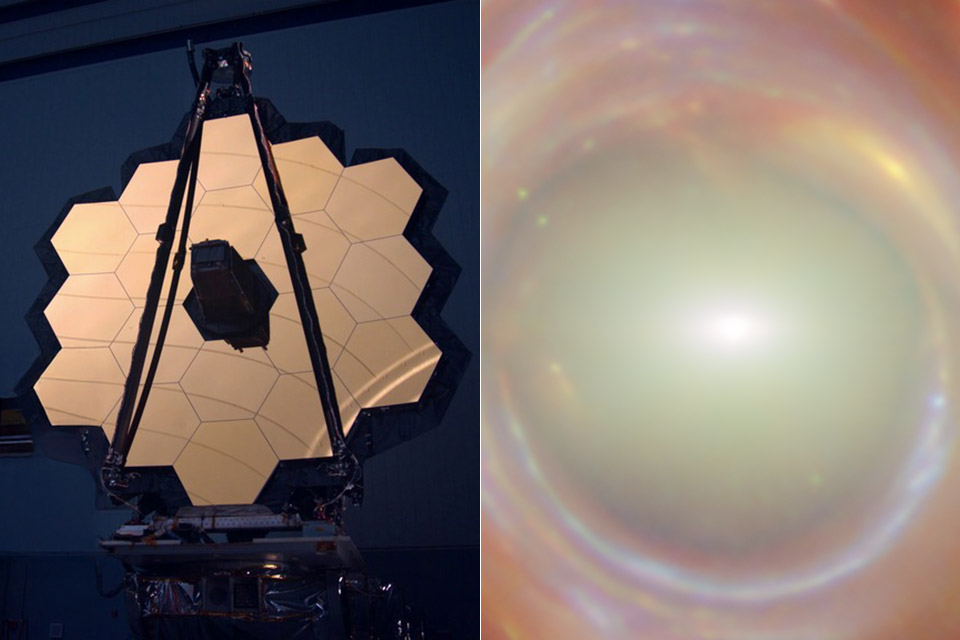James Webb Space Telescope Captures Surreal Einstein Ring in Distant Galaxy Cluster


NASA’s James Webb Space Telescope captures a surreal image of an Einstein Ring in galaxy cluster SMACSJ0028.2-7537, located between 3 to 7 billion light-years from Earth. This might look like a single, oddly shaped galaxy at first glance, but it’s actually just an illusion created by two galaxies at vastly different distances from us.
Why is it just an illusion? Well, the foreground galaxy at the center of the image functions as a gravitational lens, as its massive gravity bends the light from a more distant background galaxy, warping it into a near-perfect ring that appears to wrap around the closer galaxy. We’re not able to observe it on a local level, but it sometimes becomes clearly observable when dealing with curvatures of light on enormous, astronomical scales, such as when the light from one galaxy is bent around another galaxy or galaxy cluster.

LEGO Icons NASA Space Shuttle Discovery 10283 Model Building Set – Spaceship Collection with Hubble…
- LEGO NASA Space Set – This adult LEGO set features the Space Shuttle Discovery and the Hubble Space Telescope from NASA’s 1990 STS-31 mission,…
- Solar System Exploration – Unlock the mysteries of our solar system with this engaging 2,354-piece project, packed with authentic details and…
- Shuttle Features Galore – The space shuttle model has an opening payload bay, retractable landing gear, opening cockpit, moving elevons, space arm,…

The lensing galaxy at the center of this Einstein ring is an elliptical galaxy, as can be seen from the galaxy’s bright core and smooth, featureless body. This galaxy belongs to a galaxy cluster named SMACSJ0028.2-7537. The lensed galaxy wrapped around the elliptical galaxy is a spiral galaxy. Even though its image has been warped as its light traveled around the galaxy in its path, individual star clusters and gas structures are clearly visible,” said the ESA.
James Webb Space Telescope Captures Surreal Einstein Ring in Distant Galaxy Cluster
#James #Webb #Space #Telescope #Captures #Surreal #Einstein #Ring #Distant #Galaxy #Cluster









